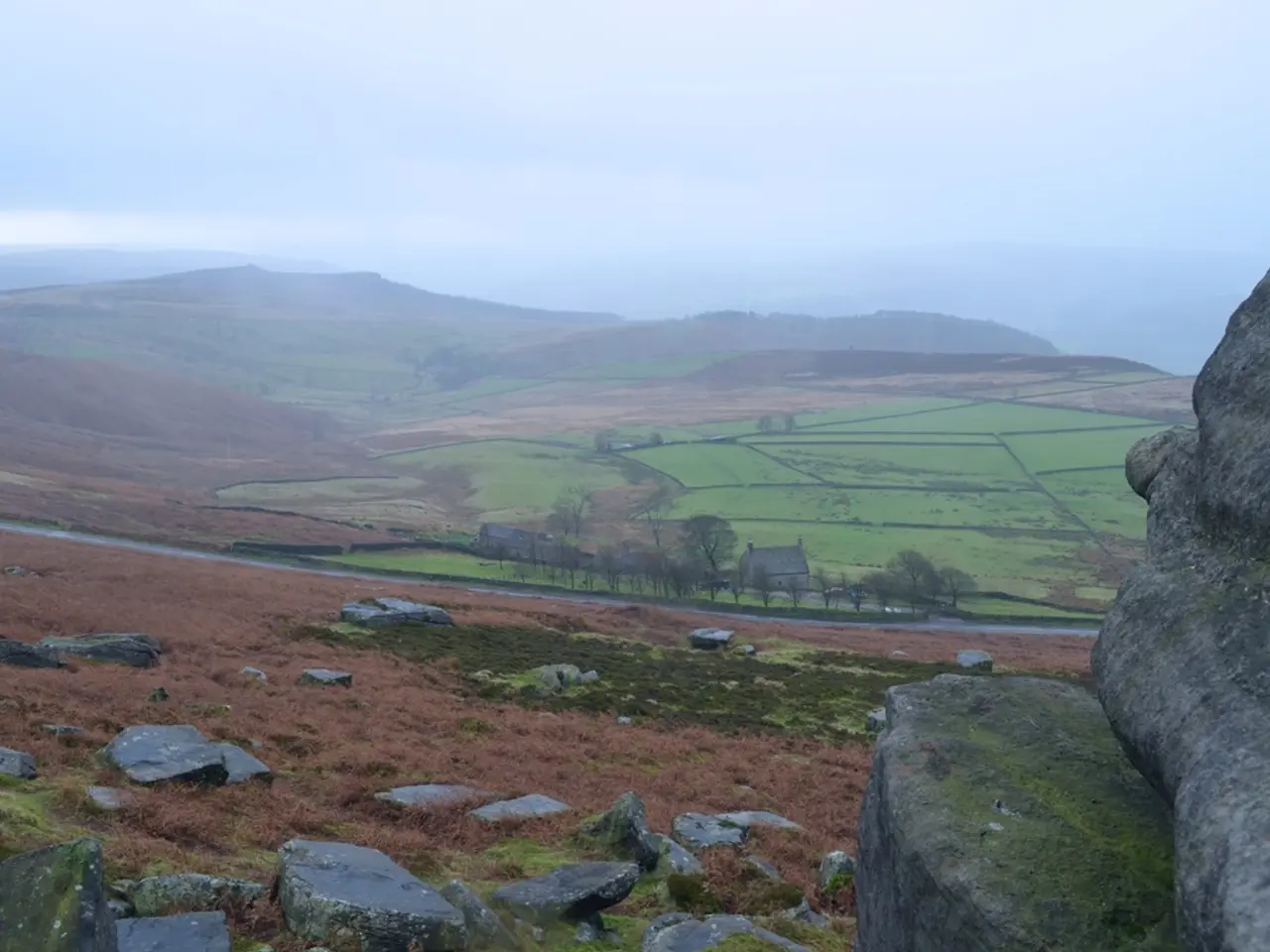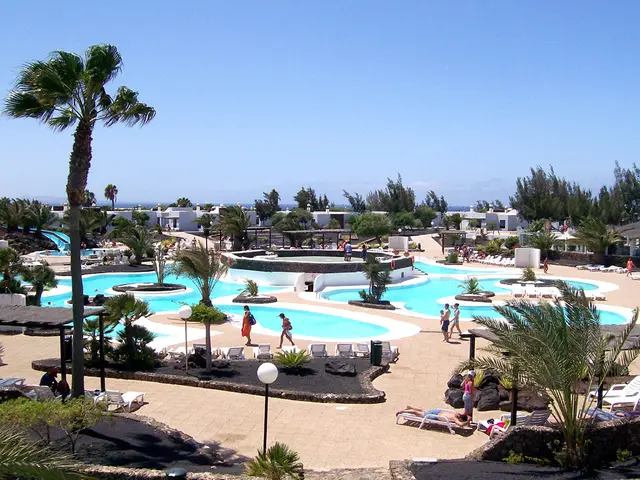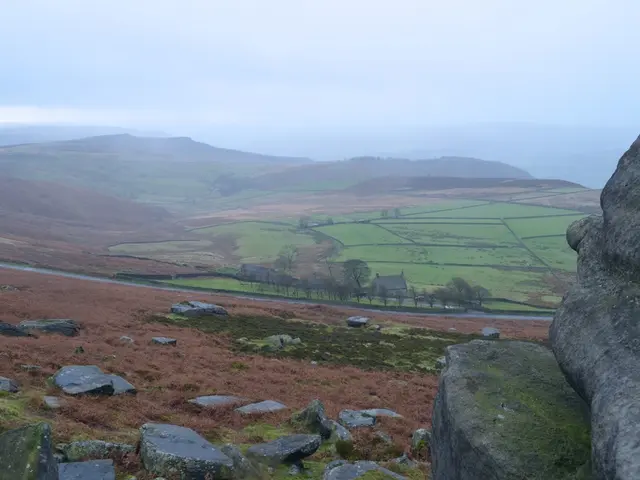Unwelcome Visitors: A Sight Too Many for Destinations Overwhelmed by Tourists
In the heart of Europe, communities like Hallstatt, Austria, Venice, Italy, and Santorini, Greece, have become popular tourist destinations, attracting millions of visitors each year. However, this influx of tourists has brought significant social, environmental, and cultural challenges, often leading to overtourism that strains infrastructure, raises living costs, and disrupts local life.
Austria's picturesque Hallstatt, with a population of just 750, welcomes over a million visitors annually, many from Asia, drawn by the town's TV series fame. Yet, the community grapples with the consequences of overtourism, prompting measures to limit tourist buses and introduce minimum stays for bus groups.
Italy, Spain, and Greece face similar struggles. Major cities like Rome, Barcelona, and Athens experience overcrowding, rising rental prices, noise pollution, and displacement of local residents. Public infrastructure is overwhelmed, cultural heritage sites suffer degradation, and traditional local businesses are often replaced by tourist-oriented ones. Residents sometimes express hostility, illustrated by protests using water guns or graffiti against tourists.
Switzerland and Austria's Alpine regions face pressure from high numbers of tourists that can degrade natural environments through overuse. These areas are implementing programs to manage tourism more responsibly, with an aim to spread visitor flows and preserve bio-cultural heritage sites.
Copenhagen, Denmark, combats overtourism with innovative approaches, such as CopenPay, a program that rewards tourists who bike, walk, or help with environmental cleanup activities. The goal is to balance visitor enjoyment with community well-being.
Across these regions, environmental degradation is a common concern, including pollution and unsustainable resource demands, especially water. Socially, residents face exclusion from public spaces and increasing costs of living, leading to tensions. Economically, while tourism generates revenue, it can also distort job markets and inflate housing markets. Culturally, mass tourism risks eroding local identity and turning traditions into mere spectacles for tourists.
Efforts to mitigate these impacts include regulating short-term rentals, promoting off-season and alternative destinations, and encouraging sustainable, experience-based tourism that benefits local economies year-round. However, the challenge remains balancing local community interests with tourism growth to maintain Europe's cultural and environmental heritage without causing backlash from residents.
The influx of tourists in Scandinavia is unlikely to decrease due to the climate crisis making cooler regions more appealing. In Mallorca, Spain, activists have resorted to placing fake signs warning of jellyfish, rockfalls, or swimming bans to deter tourists from beaches, while in Barcelona, residents have turned around signs pointing to bunkers to mislead visitors.
Four landowners in the Dolomites are demanding five euros for access to Seceda, a popular viewpoint, to combat litter, stressed livestock, trampled alpine pastures, and tourists who prioritize urban experiences over mountainous ones. Unmanaged beaches in Greece are disappearing due to beach bars and sun loungers taking up space, but authorities are now enforcing the law that at least half of the beach area must always be accessible to everyone.
Italy's tourism industry is facing strain due to overcrowding in popular destinations like Rome, Venice, and Mallorca. The Swiss municipality of Iseltwald on Lake Brienz introduced an entrance fee of five francs (about 5.40 euros) in 2023 to manage the influx of visitors, especially Asian tourists attracted by a South Korean Netflix series.
In Mallorca, the price increase has made it unaffordable for many Greeks to holiday there, and employees struggle to find accommodation because almost everything is rented out to tourists. Housing shortages, environmental pollution, traffic congestion, noise pollution, rising prices, and destruction of nature are some of the consequences of mass tourism in Spain.
Spain is on track to reach a new tourist record by 2025, potentially exceeding 100 million foreign visitors this year. According to Italy's Tourism Minister Daniela Santanchè, 75% of tourists concentrate on only 4% of the area. Barcelona aims to combat overtourism by increasing the tourist tax and phasing out holiday rentals by the end of 2028.
Yet, the balance between tourism and local life remains delicate. Some Italian locals complain about overtourism, while others complain when it gets quieter, such as traders on Lake Garda who complain about empty terraces and poor booking figures this summer.
References: [1] https://www.reuters.com/world/europe/venice-angry-over-tourist-crowds-protests-ramp-up-2021-08-29/ [2] https://www.theguardian.com/travel/2021/aug/23/venice-angry-tourists-overcrowding-protests [3] https://www.copenhagen.dk/visit-copenhagen/copenpay/ [4] https://www.reuters.com/business/environment/swiss-village-introduces-entry-fee-manage-tourist-influx-2023-02-24/ [5] https://www.theguardian.com/travel/2023/feb/24/swiss-village-introduces-entry-fee-to-manage-tourist-influx
- Environmental degradation, a common concern in tourist destinations like Hallstatt, Venice, Santorini, and others, urges the implementation of sustainable, experience-based travel to preserve natural environments and cultural heritage sites.
- In an effort to combat the negative impacts of overtourism, cities such as Copenhagen, Rome, and Barcelona have introduced measures like regulating short-term rentals, tax increases, and entrance fees to manage visitor flows and maintain a balance between tourism and local life.




